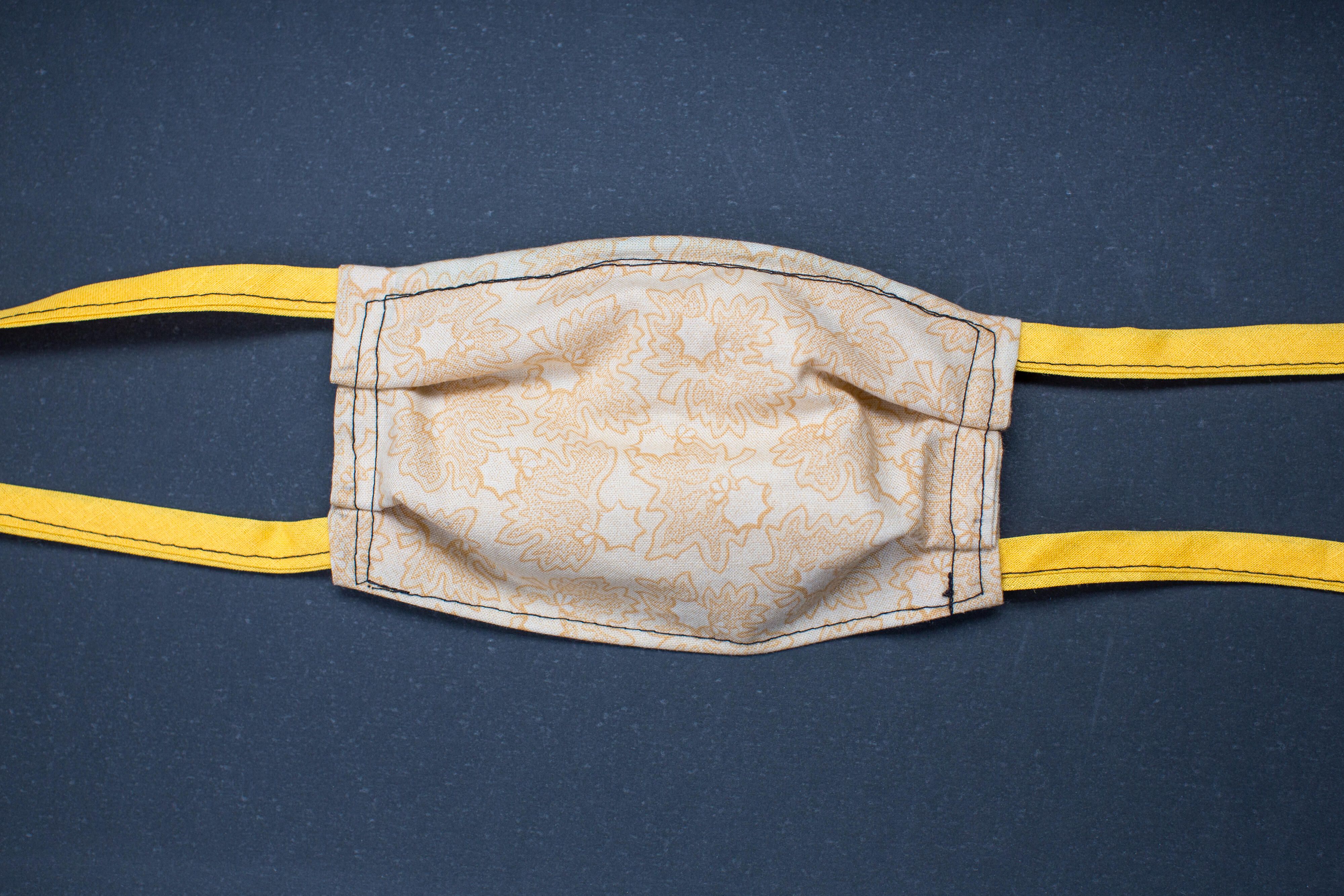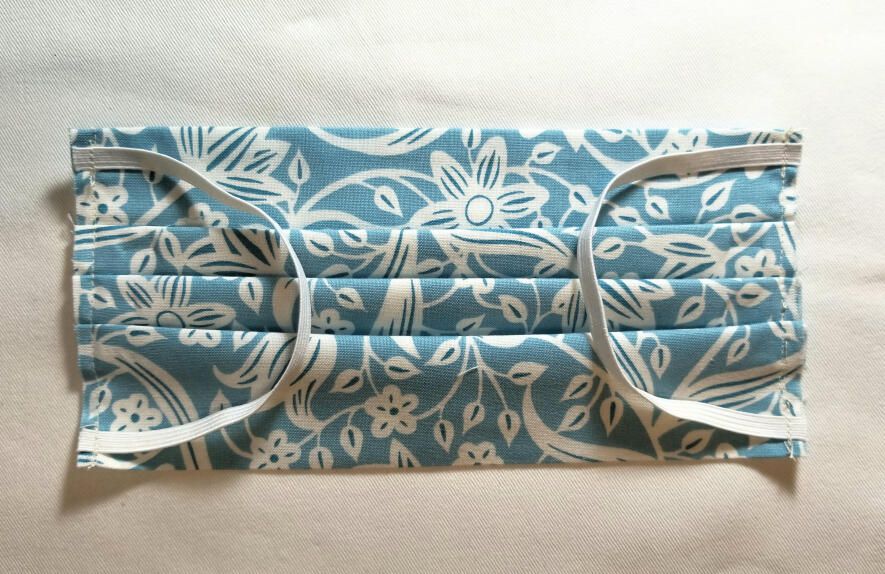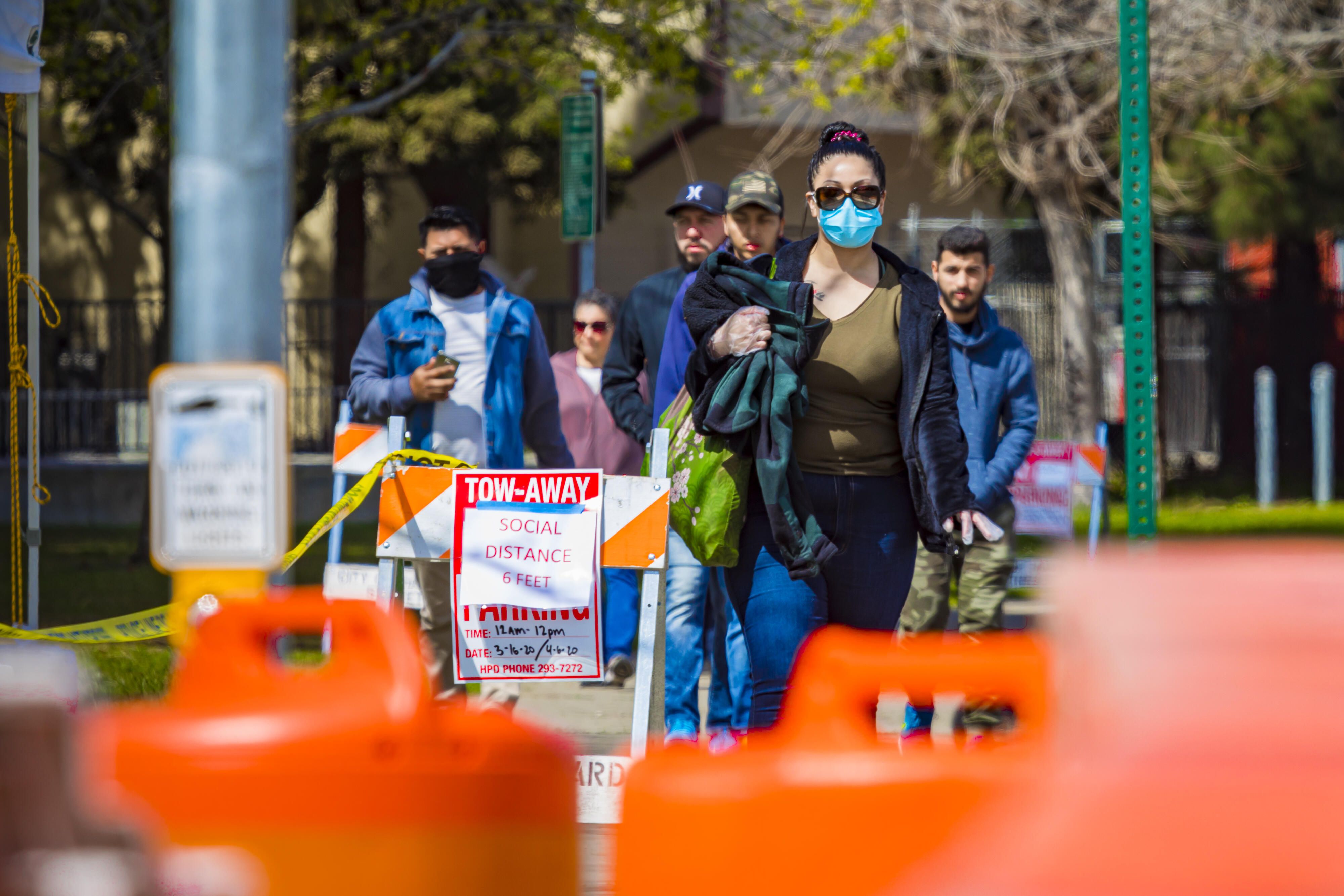Can homemade face masks prevent the coronavirus? Everything you should know
Even before the Centers for Disease Control and Prevention revised its official guideline to recommend wearing a "face covering" in certain public settings (more below), the grassroots movement to create homemade face masks was growing, both for personal use and for patients in hospitals presumed to have developed the COVID-19 disease.

In the last month since cases began spiking in the US, our knowledge about and attitudes toward homemade face masks and face coverings has dramatically shifted as the ability to acquire N95 respirator masks and even surgical masks has become critical.
But information can get muddled as the advice changes, and you understandably have questions. Are you still at risk of the coronavirus if you wear a homemade face mask in public? Just how much can a cloth face covering protect you, and what's the right way to wear one? What's the government's exact recommendation for wearing nonmedical masks in public, and why are N95 masks considered better overall?
This article is intended to be a resource to help you understand the current situation as presented by organizations like the CDC and American Lung Association. It isn't intended to serve as medical advice. If you're seeking more information about making your own face mask at home or where you can buy one, we have resources for you, too. This story updates frequently as new information comes to light and social responses continue to develop.
#DYK? CDC's recommendation on wearing a cloth face covering may help protect the most vulnerable from #COVID19. Watch @Surgeon_General Jerome Adams make a face covering in a few easy steps. https://t.co/bihJ3xEM15 pic.twitter.com/mE7Tf6y3MK
— CDC (@CDCgov) April 4, 2020

Why urge homemade, nonmedical face masks now?
For months, the CDC recommended medical-grade face masks for people who were presumed to be or confirmed to be ill with COVID-19, as well as for medical care workers. But spiking cases across the US and especially in hotspots like New York and now New Jersey, have proven that current measures haven't been strong enough to flatten the curve.
There's also data that there may be some benefit to wearing a homemade mask in crowded places like the supermarket, versus no face covering at all. Social distancing and hand-washing are still paramount (more below).
Last week, American Lung Association Chief Medical Officer Dr. Albert Rizzo said this in an emailed statement:
The wearing of the masks by all individuals can give some degree of barrier protection from respiratory droplets that are coughed or sneezed around them. Early reports show that the virus can live in droplets in the air for up to one to three hours after an infected individual has left an area. Covering your face will help prevent these droplets from getting into the air and infecting others.
"WHO has been evaluating the use of medical and non-medical masks for #COVID19 more widely.
— World Health Organization (WHO) (@WHO) April 6, 2020
Today, WHO is issuing guidance and criteria to support countries in making that decision"-@DrTedros #coronavirus
Homemade masks may help protect others from you
According to the American Lung Association, one in four people infected with COVID-19 might show mild symptoms or none at all. Using a cloth face covering when you're around others can help block large particles that you might eject through a cough, sneeze or unintentionally launched saliva (e.g., through speaking), which could slow the spread of transmission to others if you don't know you're sick.
"These types of masks are not intended to protect the wearer, but to protect against the unintended transmission -- in case you are an asymptomatic carrier of the coronavirus," the American Lung Association says in a blog post that discusses wearing homemade masks (emphasis ours).
What the CDC says about homemade face masks today
The most important takeaway from the CDC's message is that covering your face when you leave the house is a "voluntary public health measure" and must not replace proven precautions like self-quarantine at home, social distancing and thoroughly washing your hands.
The CDC is the US authority on protocols and protections against COVID-19, the disease caused by the coronavirus.
In the CDC's words, it "recommends wearing cloth face coverings in public settings where other social distancing measures are difficult to maintain (e.g. grocery stores and pharmacies) especially in areas of significant community-based transmission." (The emphasis is the CDC's.)
The institute says not to seek out medical or surgical-grade masks for yourself and to leave N95 respirator masks to health care workers, opting instead for basic cloth or fabric coverings that can be washed and reused. Previously, the agency considered homemade face masks a last resort in hospitals and medical facilities.
Keep reading for more on the CDC's original stance on homemade masks.
The right way to wear a face covering or cloth face mask
The most important thing is to cover your entire nose and mouth, which means that the face mask should fit underneath your chin. The covering will be less effective if you remove it from your face when you're in a crowded store, like to speak to someone. For example, it's better to adjust your covering before you leave your car, rather than while waiting in line at the supermarket. Read on for why fit is so important.
Can you reuse your face mask?
Homemade masks and coverings made from cloth fabric are machine-washable. Medical-grade masks ideally are single-use, though in certain hospital environments, the severe shortage of N95 masks is making procedural exceptions a necessity. Here's what you need to know about mask cleaning and reuse.
The great face mask debate
For weeks, a debate has raged over whether homemade face masks should be used in hospital settings and also by individuals in public. It comes at a time when the available stock of certified N95 respirator masks -- the essential protective equipment used by health care workers fighting the coronavirus pandemic -- has reached critical lows.
In a medical setting, handmade masks aren't scientifically proven to be as effective at protecting you from the coronavirus. Why not? The answer comes down to the way N95 masks are made, certified and worn. It may not matter if care centers are forced to take a "better than nothing" approach.
If you do have a supply of N95 masks on hand, consider donating them to a health care facility or hospital near you. Here's how to donate hand sanitizer and protective equipment to hospitals in need -- and why you should also refrain from making your own hand sanitizer.

N95 masks vs. other masks: Facial fit and certification
N95 respirator masks are considered the holy grail of face coverings, and the one considered by medical professions to be the most effective at protecting the wearer from acquiring the coronavirus.
N95 masks differ from other types of surgical masks and face masks because they create a tight seal between the respirator and your face, which helps filter at least 95% of airborne particulates. They might include an exhalation valve to make it easier to breathe while wearing them. Coronaviruses can linger in the air for up to 30 minutes and be transmitted from person to person through vapor (breath), talking, coughing, sneezing, saliva and transfer over commonly touched objects.
Each model of N95 mask from each manufacturer is certified by the National Institute for Occupational Safety and Health. N95 surgical respirator masks go through a secondary clearance by the Food and Drug Administration for use in surgery -- they better protect practitioners from exposure to substances such as patients' blood.
In US health care settings, N95 masks must also go through a mandatory fit test using a protocol set by OSHA, the Occupational Safety and Health Administration, before use. This video from manufacturer 3M shows some of the key differences between standard surgical masks and N95 masks. Homemade masks are unregulated, though some hospital websites point to preferred patterns that they suggest using.
Handmade face masks: Cotton and elastic
Homemade face masks can be fast and efficient to make at home, with a sewing machine or sewn by hand. There are even no-sew techniques, like using a hot iron, or a bandana (or other cloth) and rubber bands. Many sites provide patterns and instructions that use multiple layers of cotton, elastic bands and ordinary thread.
By and large, the patterns contain simple folds with elastic straps to fit over your ears. Some are more contoured to resemble the shape of N95 masks. Still others contain pockets where you can add "filter media" that you can buy elsewhere.
Be aware that there isn't strong scientific evidence that the masks will conform to the face tightly enough to form a seal, or that the filter material inside will work effectively. Standard surgical masks, for example, are known to leave gaps. That's why the CDC emphasizes other precautions, like washing your hands and distancing yourself from others, in addition to wearing a face covering in crowded areas and coronavirus hotspots when you go out in public.

What homemade masks were used for first (not COVID-19)
Many sites sharing patterns and instructions for homemade masks were created as a fashionable way to keep the wearer from breathing in large particles, like car exhaust, air pollution and pollen during allergy season. They were not conceived of as a way to protect you from acquiring COVID-19. However, the CDC believes these masks could help slow the spread of the coronavirus since other types of masks are no longer widely available.
One site, CraftPassion, includes this disclaimer:
Due to recent coronavirus attacks across the world, I have been receiving a lot of requests on how to add nonwoven filter inside the face mask. Disclaimer: this face mask is not meant to replace the surgical face mask, it is a contingency plan for those who have no avail to surgical mask in the market. Proper use of a surgical mask is still the best way to prevent virus infection.

CDC's original stance on homemade masks
Along with the World Health Organization, the CDC is the authoritative body that sets guidelines for the medical community to follow. The CDC's position on homemade masks has changed throughout the coronavirus outbreak.
On March 24, acknowledging a shortage of N95 masks, one page on the CDC website suggested five alternatives if a health care provider, or HCP, doesn't have access to an N95 mask.
Here's what one CDC site had to say about homemade masks then:
In settings where face masks are not available, HCP might use homemade masks (e.g., bandana, scarf) for care of patients with COVID-19 as a last resort [our emphasis]. However, homemade masks are not considered PPE, since their capability to protect HCP is unknown. Caution should be exercised when considering this option. Homemade masks should ideally be used in combination with a face shield that covers the entire front (that extends to the chin or below) and sides of the face.
A different page on the CDC site appeared to make an exception, however, for conditions where no N95 masks are available, including homemade masks. (NIOSH stands for the National Institute for Occupational Safety and Health.)
HCP use of non-NIOSH approved masks or homemade masks
In settings where N95 respirators are so limited that routinely practiced standards of care for wearing N95 respirators and equivalent or higher level of protection respirators are no longer possible, and surgical masks are not available, as a last resort, it may be necessary for HCP to use masks that have never been evaluated or approved by NIOSH or homemade masks. It may be considered to use these masks for care of patients with COVID-19, tuberculosis, measles and varicella. However, caution should be exercised when considering this option.
Now, the CDC advocates for all civilians to wear a face covering when they leave the house.
Masks and sterilization
Another difference between homemade masks and factory-made masks from brands like 3M, Kimberly-Clark and Prestige Ameritech have to do with sterilization, which is crucial in hospital settings. With handmade face masks, there's no guarantee the mask is sterile or free from an environment with coronavirus -- it's important to wash your cotton mask or face covering before initial use and between uses.
CDC guidelines have long considered N95 masks contaminated after each single use and recommend discarding them. However, the severe shortage of N95 masks has caused many hospitals to take extreme measures in an attempt to protect doctors and nurses, like attempting to decontaminate masks between use, through resting masks for a period of time, and experimenting with ultraviolet light treatments to sterilize them.
In a potentially game-changing move, the FDA used its emergency powers on March 29 to approve the use of a new mask sterilization technique from an Ohio-based nonprofit called Battelle. The nonprofit has begun sending its machines, which are capable to sterilizing up to 80,000 N95 masks a day, to New York, Boston, Seattle and Washington, DC. The machines use "vapor phase hydrogen peroxide" to sanitize masks, allowing them to be reused up to 20 times.
Again, cloth or fabric face masks for home use can be sterilized by washing them in the washing machine.
Know the limits
It's worth emphasizing again that sewing your own face mask may not prevent you from acquiring the coronavirus in a high-risk situation, like lingering in crowded places or continuing to meet up with friends or family who don't already live with you.
Since the coronavirus can be transmitted from someone who appears to be symptom-free but actually harbors the virus, it's crucial to the health and wellness of people over 65 and those with underlying conditions to know which proven measures will help keep everyone safe -- quarantine, social distancing and hand-washing being the most crucial, according to experts.
For more information, here are eight common coronavirus health myths, how to sanitize your house and car, and answers to all your questions about the coronavirus and COVID-19.
You should read it
- Coronavirus vaccines: The drugs in development to treat COVID-19
- Coronavirus stimulus check is official: Find out if you're eligible for up to $1,200
- Coronavirus $1,200 stimulus check: Find out if you're eligible
- Coronavirus vaccines: Drug trials, chloroquine and treatments for COVID-19
- Coronavirus updates: States extend lockdowns as federal social distancing guidelines pushed to April 30
- Google searches about finances spike in US amid coronavirus pandemic
 Watch the NASA Apollo 13 mission 50 years later
Watch the NASA Apollo 13 mission 50 years later See Earth through the eyes of a Mercury-bound spacecraft saying goodbye to home
See Earth through the eyes of a Mercury-bound spacecraft saying goodbye to home NASA satellite views of Chernobyl Exclusion Zone wildfires paint a worrisome picture
NASA satellite views of Chernobyl Exclusion Zone wildfires paint a worrisome picture How to handle bee stings
How to handle bee stings Here's your chance to design a NASA payload for a Roomba-sized moon rover
Here's your chance to design a NASA payload for a Roomba-sized moon rover Ancient string shows Neanderthals were into fiber technology, scientists say
Ancient string shows Neanderthals were into fiber technology, scientists say